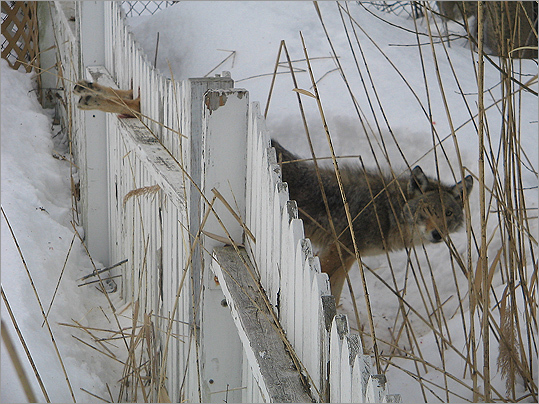hikingmaineac
New member
This coyote got its hind legs caught in a picket fence and had to be released by police and firefighters.I'm happy to have a fenced backyard. How high can a coyote jump??

An Article on Boston.com today talks about encroaching coyotes in MA and how to scare them off. It suggests you can “scare or threaten coyotes with loud noises and bright lights.’’
An online GIS mapping tool has been created so the public can share/track coyote sightings.
Last edited:
